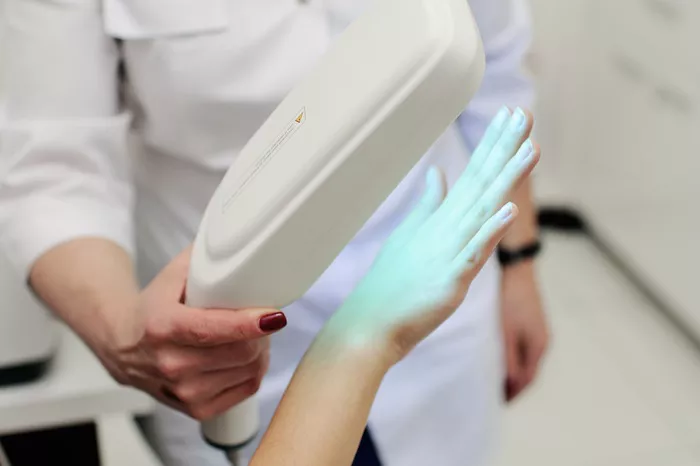Using light to treat skin conditions is increasingly common, with phototherapy emerging as a prominent method. Dr. Simon Hernandez, a dermatologist at Genesee Valley Dermatology & Laser Center, elaborates on how this technique operates and its advantages over other treatments.
How Phototherapy Works
Phototherapy, or light therapy, utilizes specific wavelengths of light to address various skin issues. Dermatologists employ lamps emitting different types of ultraviolet (UV) light to modulate the body’s immune response, particularly for conditions involving overactive immune and skin cells. Narrow-band UV-B light is typically used, which is distinct from light therapies aimed at anti-aging or skin rejuvenation.
Conditions treated with phototherapy include eczema, lichen planus, polymorphous light eruption, psoriasis, and certain skin cancers such as cutaneous T cell lymphoma. “Phototherapy can stimulate the production of molecules that suppress tumor cells, aiding in the treatment of some skin cancers,” explains Dr. Hernandez.
Starting Treatment
Patients first consult with a dermatologist to evaluate the suitability of phototherapy. During a treatment session, they enter a phototherapy booth resembling an upright tanning bed, disrobe, and don protective eyewear. The session is brief, often lasting under a minute. Most patients require 2-3 sessions per week, with intervals of 24-48 hours to monitor skin response and adjust light exposure as needed. “Exposure gradually increases until the optimal dosage is determined,” Dr. Hernandez notes.
Home phototherapy units are available but vary in insurance coverage. Patients should verify their insurance benefits before purchasing.
Treatment Duration and Side Effects
Typically, patients require 1-2 months to find the ideal light dosage and observe improvement. Treatment duration varies by condition, with some requiring ongoing sessions for several months or years.
Side effects are akin to those of sun exposure and include sunburn, redness, itching, and potential for premature skin aging. Certain individuals, such as those with lupus or those on photosensitizing medications, should avoid phototherapy due to increased risks. Immediate medical consultation is advised if severe reactions occur, such as blistering, vision changes, or intense itching.
Dr. Hernandez concludes, “Phototherapy is a safe and effective option for many chronic skin conditions. Its controlled use of light helps mitigate risks associated with sun exposure and offers a viable alternative for those seeking to reduce reliance on medications.”
Related topic:
What collagen is best for wrinkles: A Comprehensive Guide
Can microdermabrasion remove acne scars?

